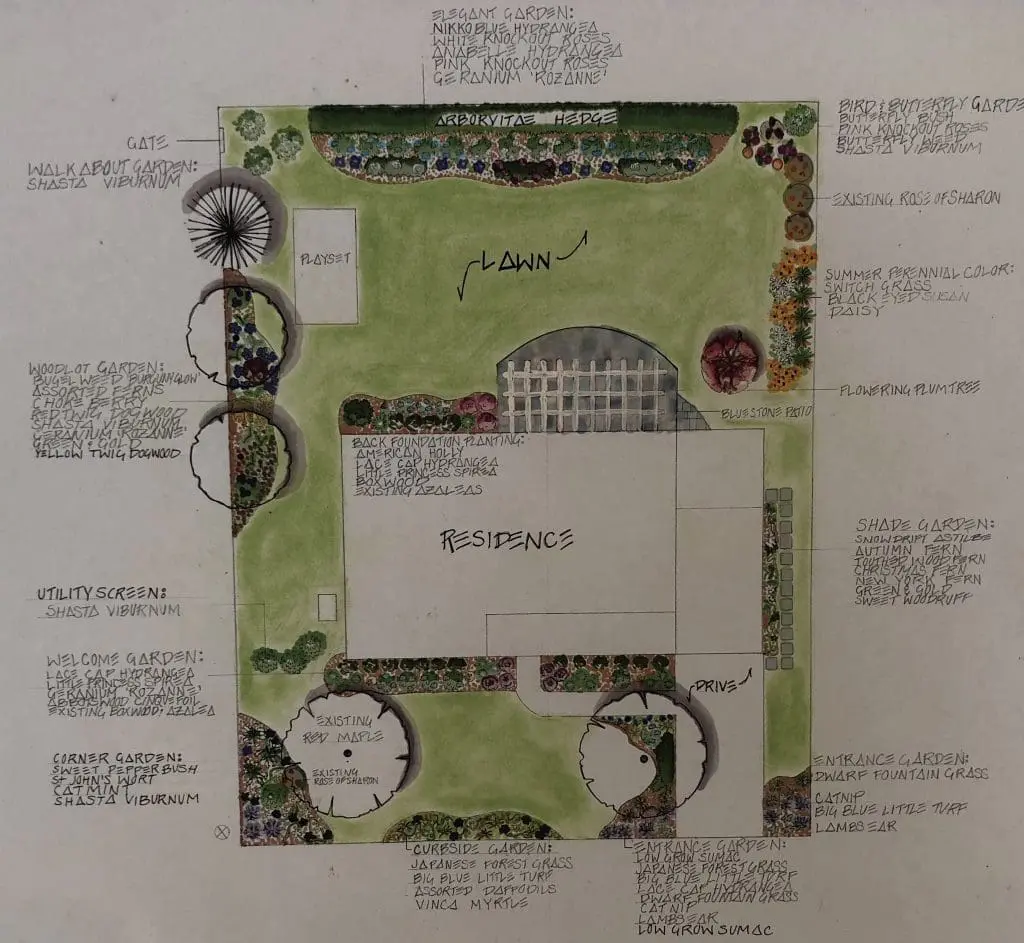Each and every landscape environment, each property, each client, each homeowner offers a unique and special opportunity to improve or downright convert the landscape into a highly efficient and productive ecological system. In this day and age of climate change and environmental threats to our well-being and human health, we must find ways to optimize existing conditions and resources while redesigning landscapes for better living. Always our goal is not to achieve carbon neutral but a net positive. We’ve never met a landscape that couldn’t be improved in terms of health, aesthetics, and ecological function. To do this, we take an integrated approach, where design meets ecology. Acknowledging the interdependence and biological relationships between soil, plants and water. This can be achieved while respecting a client’s taste, style, culture, wishes and desires.

In this case, we have a very attractive, contemporary, newly constructed home, with a formal landscape architectural sensibility. To create a more attractive landscape, while achieving our high standard of excellence regarding sustainable ecology and ornamental horticulture, we first start off well-developed master plan. This color-rendered, scaled drawing provided an overall defined concept with individual landscape garden areas and features.


[Above Top: Front Yard BEFORE; Above Second: Front Yard AFTER; Designed & Installed by Green Jay Landscape Design]
As always, landscape construction provides fresh new challenges, problems and solutions. One of the joys of working with an invested and caring client is that they encourage creativity and innovation, such as new combinations and possibilities in plant design and hardscape construction. From the beginning, we are aware of our responsibility to manage the full resources available including land, air, water, and financial resources. As a green design-build landscape contractor, it is an especially rewarding experience to be engaged fully in the process of conceptual design, through construction and installation through completion, to managing a property on an on-going basis. Taking a landscape which was previously treated poorly both culturally and with toxic pesticides to a completely pesticide, toxin free organically sustainable environment is a fabulous reward for our team, our client and the greater ecosystem.

[Above: BEFORE photo of Arborvitae less than thriving and hardly screening the road]
As Accredited Organic Land Care Professionals (AOLCP), it never ceases to surprise and amaze us how poorly our residential landscape properties have been treated historically. One of the prime motivations for our client to develop a plan with the intent to execute our joint vision within the same season was the feeling of an incomplete screen on the back side of the property. The client pointed out the existing single linear row of Arborvitae, which seemed to not be growing over the last three years. Our suggestion was to remove the existing plants, add some larger specimens, and arrange the plants in a more natural, staggered and layered formation. While we anticipated amending and improving the soil, as we consider essential to each and every landscape installation we are involved in, we did not anticipate a couple of significant factors that contributed greatly to the limited performance and overall health of the planting in this area. For one thing, the existing Arborvitae were planted too high or too deep in insufficient soil, some with the burlap and plastic string still attached. In addition, evidently deer browse was a problem, contributing to overall health and lack of growth. Once we excavated to expand the planting bed, construct the berm and arrange the new plants integrated with the old, we discovered in this area of the property, the soil and subsoil consisted primarily of dead sand. Dead sand was used primarily for early septic systems in agricultural or post-agricultural development. We were able to make these assumptions by touch, feel and smell.

[Above: AFTER photo of new Arborvitae hedge with hydrangea & rose underplanting]
I inevitably find on commercial projects there is little or no allocation in the budget for soil remediation. We must always keep in mind that life begins below ground, where the resources and possibilities for life exist. The absolute essential key to success is to increasing the microbial activity and diversity of populations within of soil organisms. Our goal is to nurture life and grow plants. We feel the best and only way to succeed is to use natural, organic source Earth products and high-grade biologicals to prepare the soil. We removed, carted and dumped 10,000 pounds of dead sand at a specially approved facility. In addition to replacing the void, we built a slight berm to elevate the planting above the roadway to improve drainage. Within six months, we enjoyed a flush of new growth. Between the improved design of staggering heights and layering, along with regular applications of organic deer repellent, the overall effect was a substantial improvement.

One of the joys of our work is the response from the children of our clients, in this case, young Nicholas, five-years-old. When mom was reading to him in his bedroom about Monarch butterflies, he insisted they go into the backyard so he could see the real thing in his very own butterfly garden. How cool is that!